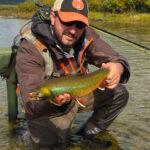The Best Anglers Never Stop Learning
The Best Anglers Never Stop Learning
The Best Anglers Never Stop Learning
The Best Anglers Never Stop Learning
I finally had my first shots at permit last week, and it was humbling. The biggest challenge? The wind. I had fish in range, but my leader kept kicking to the side, my loops collapsed on long casts, and when I did get a decent cast out, the wind seemed to kill my accuracy. How do experienced permit anglers adjust their casting and presentation to deal with serious wind conditions?

Wind and permit fishing go hand in hand—if you’re not dealing with wind, you’re probably not in permit country. The difference between a blown shot and a perfect presentation comes down to adjusting your casting mechanics, line control, and angle of attack.
Permit fishing never happens in ideal conditions—wind will always be a factor. If you adjust your casting angle, increase line speed, and fine-tune your accuracy, you’ll be able to deliver flies with confidence no matter how tough the conditions get.
No recommended resources available.
"*" indicates required fields
Sign up for full access to the Learning Center
and all the FlyBrary Content.

payment methods accepted
Copyright © 2003 – 2025 MidCurrent LLC, All Rights Reserved.
Copyright © 2003 – 2025 MidCurrent LLC, All Rights Reserved.